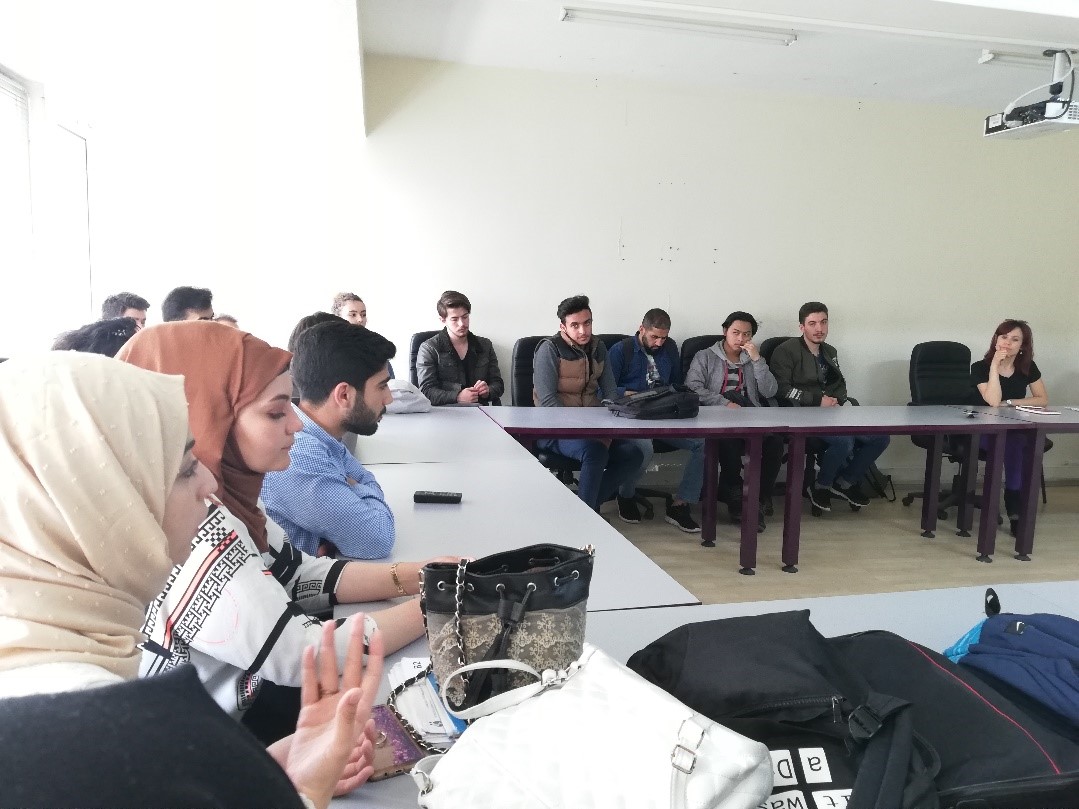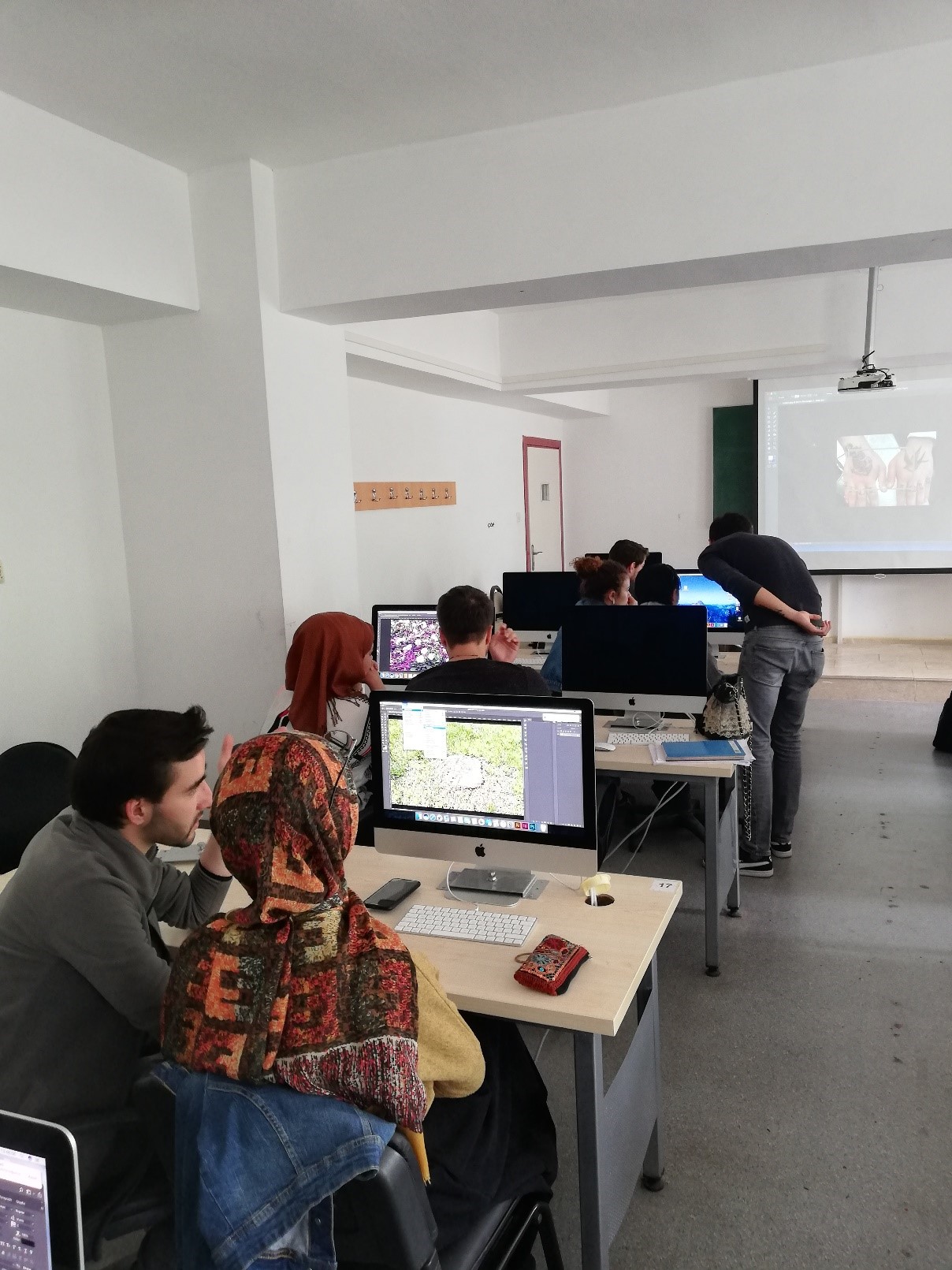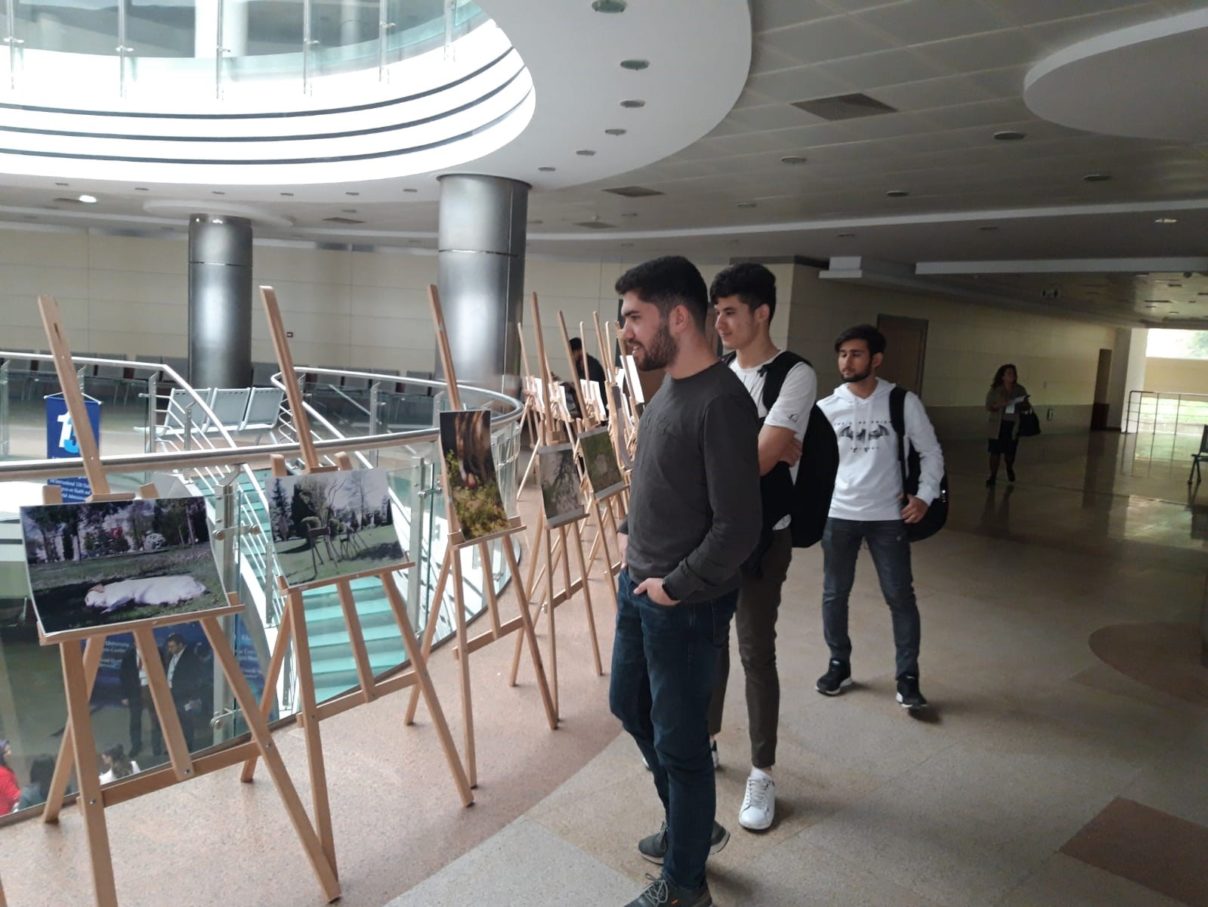Case study at Anadolu
Case study at Anadolu

Building an Intercultural Pedagogy for Higher Education in Conditions of Conflict and Protracted Crises: Languages, Identity, Culture!
With the Other on the Campus: Learning, Teaching, and Working Together to Understand Others and Ourselves Better
The Researchers
Assoc. Prof. Filiz Göktuna Yaylacı, Anadolu University, Faculty of Humaties, Department of Sociology
Assoc. Prof. Ali Faruk Yaylacı, Kutahya Dumlupinar University, Faculty of Education, Department of Educational Sciences
Asst. Prof. Kadriye Uzun, Sakarya University, Faculty of Communication, Department of Communication Design and Media
The Focus of the Case Study
The main purpose of this case study is to evaluate how Turkish and foreign students’ impressions of one another change in the process of intercultural learning. The case study aims to create a learning and practice environment for both domestic and foreign students living on the same campus, through participatory photography. The participants (the students) are expected to discuss experiences and challenges related to their lives on campus and to reflect these through photographs. The case study draws on critical pedagogy and Freirean dialogue where researchers guide students to work together to develop understandings of self and other (around the concepts of language, culture and identity). The study has two main dimensions. The first dimension involves a six-stage application, which includes basic photography training, photo shoots, focus group discussions, and culminates in an exhibition. The second dimension involves the researchers’ analysis of the first stage and its outcomes to build a critical intercultural pedagogy informed by creative understanding and Freirean processes of dialogue.

Case Study Process
This study has two main dimensions. In the first dimension, there was a six-stage application and in the second dimension, the data and findings obtained from the application were analysed and based on the literature. The activities in the application dimension were realized within the framework of critical pedagogy and creative dialogue understanding. The project aims to create a common learning and practice environment for local and foreign students living on the same campus. The participants were expected to discuss the problems related to their lives on campus together and reflect these problems in the photographs. The project includes focus groups, basic photography training, photo shoots and exhibition. All activities of this study carried out based on critical pedagogy and Freire’s understanding of dialogue. The case study was conducted at Sakarya University, situated in Sakarya in Turkey’s Marmara region. A total of 23 participants (12 foreign students and 11 Turkish students) consisted of study group. Nine of the 12 foreign students are from Muslim countries in the Middle East while one student is from Afghanistan and one student is from Indonesia. The ages of foreign students are between 19 and 24 years. Seven of the foreign students are male and 4 of them are female. The foreign students had lived in Turkey from 4 months to 7 years. Eight of the participating Turkish students are male and 3 are female. Turkish participants ranged in age from 19 to 24 years. All of the Turkish participants are in the Faculty of Communication.
The case study in brief:

March 2019:
In the first stage, the researchers organized an introductory meeting with the participants.
April 2019:
In the second stage of the case study, Turkish participants (students in the Faculty of Communication) showed and taught basic photography techniques to the foreign participants.
April 2019:
After the basic photography course, the participants discussed their lives and problems on campus at a focus group meeting. They talked about what they would photograph (basic problems of students, problems of foreign students and interaction between Turkish students and foreign students). In this discussion, they identified the main challenges in their lives on campus and decided to focus not only on negative things but also on the positive things on campus.

May 2019:
In the fourth stage of the case study, the participants gathered on the day they determined and took photos about the themes they identified in the previous stage.
October 2019:
At this stage, the web blog page opened and an exhibition was organized.
The participants organized a focus group and discussed their experiences in the case study. Others shared their views and thoughts about campus life. The discussion was very fruitful and many participants talked about changing their perceptions about each other.

Some tentative findings
Bringing together art, learning, teaching and working together, this case study, through intercultural engagement, has enabled students to get to know each other closely and think differently about their impressions of and prejudices about the other.
One of the most important outcomes of this case study for all participants was their enthusiastic demand that such activities should be carried out continuously.
To be “with the Other” on campus means to start to change their thoughts on the other: Learning, Teaching, and Working Together helped Understand Others and Ourselves Better.
In the final focus group discussion, the participants and researchers discussed their experiences, highlighting the following important points. First, all participants thought that such activities should be continuous. The students stated that they had the opportunity to get to know their fellow students (the others) who shared the same campus. According to the participants, formal education processes cannot create such friendly and warm interaction between foreign and domestic students. However, these kinds of activities that aim to bring together foreign and Turkish students are very important to solve the communication problems between ‘us’ and ‘others’.
Some results:
- Bringing together art, learning, teaching and working together, this case study has enabled students to get to know each other closely and think differently about their prejudices about the other.
- One of the most important outcome of this case study for all participant, the most important result is the enthusiastic demand that such activities should be carried out continuously.
- To be With the Other on the Campus means to start to change our thoughts on the other: Learning, Teaching, and Working Together helped Understand Others and Ourselves Better.
- In the final Focus Group Discussion, the participants and researchers discussed their experiences. The experiences of the participants highlight important points.
- First of all, all participants think that such activities should be continuous. The students stated that they had the opportunity to get to know their fellow students (the others) who share the same campus. According to the participants at the university, formal education processes cannot create such friendly and warm interaction between foreign and domestic students. However, these kind activities that aim to bring together foreigners and Turkish students very important to solve the communication problems between ‘us’ and ‘others’.
More Pictures from Anadolu
